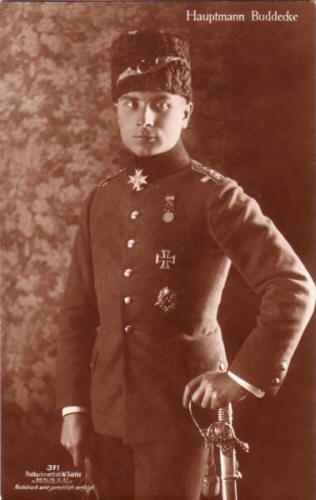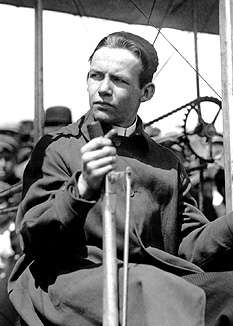
Cicero is a suburb of Chicago and an incorporated town in Cook County, Illinois, United States. Per the 2020 census, the population was 85,268. making it the 11th largest municipality in Illinois. The town of Cicero is named after Marcus Tullius Cicero, a Roman statesman and orator.
This is a list of aviation-related events from 1911:

Lincoln Beachey was a pioneer American aviator and barnstormer. He became famous and wealthy from flying exhibitions, staging aerial stunts, helping invent aerobatics, and setting aviation records.

Calbraith Perry Rodgers was an American aviation pioneer. He made the first transcontinental airplane flight across the U.S. from September 17, 1911, to November 5, 1911, with dozens of stops, both intentional and accidental. The feat made him a national celebrity, but he was killed in a crash a few months later at an exhibition in California.

Walter Richard Brookins, was an American aviator. He was the first pilot trained by the Wright brothers for their exhibition team.

Katherine Stinson was an American aviation pioneer who, in 1912, became the fourth woman in the United States to earn the FAI pilot certificate. She set flying records for aerobatic maneuvers, distance, and endurance. She was the first female pilot employed by the U.S. Postal Service and the first civilian pilot to fly the mail in Canada. She was also one of the first pilots to ever fly at night and the first female pilot to fly in Canada and Japan.
Benjamin Odell Howard, was an American aviator and aeronautical engineer, whose aircraft won the Bendix Trophy and the Thompson Trophy in 1935.

The Wright Exhibition Team was a group of early aviators trained by the Wright brothers at Wright Flying School in Montgomery, Alabama in March 1910.

Hans-Joachim Buddecke was a German flying ace in World War I, credited with thirteen victories. He was the third ace, after Max Immelmann and Oswald Boelcke, to earn the Blue Max. He saw combat in three theaters during the First World War: Bulgaria, Turkey, and the Western Front. His exploits at Gallipoli arena won him the nickname El-Schahin, "hunter falcon".

George William Beatty was an American pioneer aviator who set early altitude and distance records, including one record set on the same day that he flew his first solo flight.

Harry Nelson Atwood was an American engineer and inventor known for pioneering work in the early days of aviation, including setting long-distance flying records and delivering the first delivery of air mail in New England.
William E. Somerville was a Scottish-American aircraft engineer.

Farnum Thayer Fish was an early American airplane pilot known as the "Boy Aviator". He was, at the age of 15, the "youngest licensed aviator in the world".

Andrew Drew was an American tennis player. He competed in the men's singles and doubles events at the 1904 Summer Olympics.

Paul Peck was an early U.S. aviator. The first aviator from the U.S. state of West Virginia, he set a number of aviation firsts and records before dying in a plane crash.

Max Lillie was a Swedish born American pioneer aviator and flight instructor.

Lewis Cassidy Rockwell was a United States Army Second Lieutenant who died in an aircraft crash. Rockwell was the fourth commissioned officer of the United States Army to meet death in an aviation accident. His passenger, Corporal Frank S. Scott was the first enlisted American to die in an air crash. The crash was the first in the world in which two or more persons were killed.















